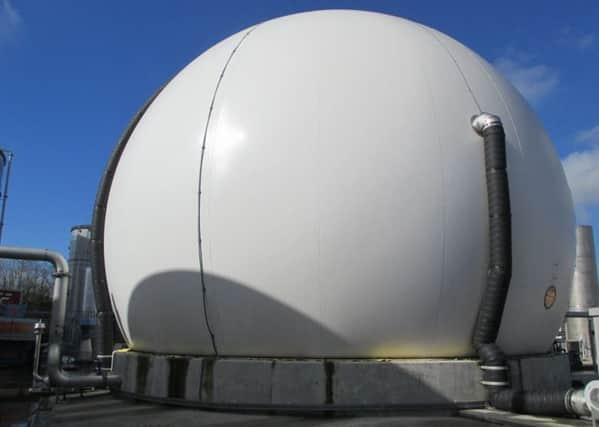Tyrone's rise in green gas - eight sites digest 85,400 tonnes of waste


Industrial estates and farms across the district have seen a mushroom-like growth in the large white domes which are part of a multi-million-pound industry to digest waste food scraps into usable electricity and energy.
Fuelled by the drive to introduce kitchen slop buckets in every home, the eight local anaerobic digestion plants now handle 85,400 tonnes of waste annually, up from just 3.3 thousand tonnes in 2012, according to latest figures released by the Department of Agriculture at the Northern Ireland Assembly.
Advertisement
Hide AdAdvertisement
Hide AdThe sites are at Dungannon’s Granville Park, Castledawson, Fivemiletown, Dromore and Newtownstewart.
In 2011, there were no such plants in the area.
The anaerobic digestion process involves farm slurry, vegetable peelings, paper and other organic material decomposing inside a closed chamber to produce gas, which is then used to generate electricity.
The Environment Department predicts the industry could produce enough energy for nearly a million homes within a decade.
The supporters of anaerobic digestion claim they are a cost-effective and environmentally-friendly way of producing gas to heat homes while curbing greenhouse gas emissions. According to the Anaerobic Digester and Bioresources Association (ADBA), the industry’s lobby group, they will lead to ‘stable energy prices, fewer carbon dioxide emissions, and a financial saving for homes and businesses across the country’.
Advertisement
Hide AdAdvertisement
Hide AdThey turn it into a porridge-like substance in huge mixers before pumping it into large oxygen-free tanks. The material is then reduced by microbes to methane-rich gas, which can be pumped directly to the National Grid or used to generate electricity. The residue can be used as compost.